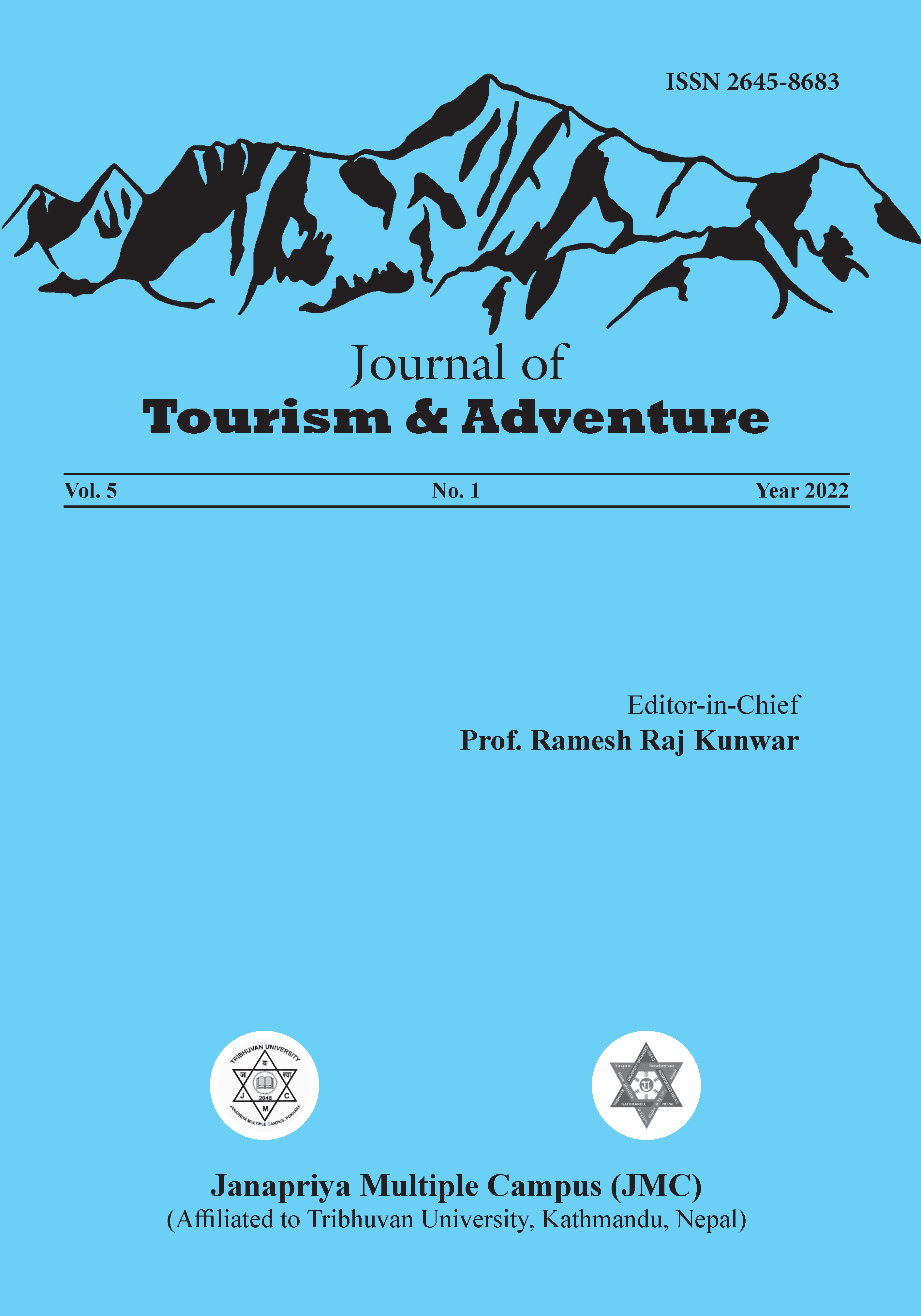A Study of Pilgrimage Tourism in Halesi, Khotang, Nepal
DOI:
https://doi.org/10.3126/jota.v5i1.48740Keywords:
Halesi, infrastructure, pilgrims, pilgrimage tourism, religious behaviourAbstract
Halesi is one of the most important pilgrimage tourism destinations of eastern Nepal. The purpose of this study is to highlight the culture, religion, belief, ritual, pilgrims’ behavior, ‘metempsychosis’ (story, legend and myth) and heritage of the Hindu, Tibetan Buddhist and Kirati (Rai) communities through the traditions (great and little tradition or textual, oral and transcendental cultural tradition) that play an important role for shaping the universe of power, place and people. Apart from these aspects of culture in Halesi, this research investigates how pilgrimage site has been commoditized into tourism destination which is what pilgrimage tourism talks about. This is a preliminary study of pilgrimage tourism in Halesi, Khotang, Nepal and provides room for further exploration. This study uses qualitative grounded theory to analyse pilgrimage tourism in Halesi, Khotang, which is a polyethnic pilgrimage place for three diverse groups with the respective religious beliefs executing holy rituals in accordance with their own customs. In order to carry out the research, a fieldwork was done for 38 days in Halesi. Data were gathered from different respondents including key informants, locals, hoteliers, priests, lamas, pilgrims, and visitors. The major data sources were open-ended inquiries and informal conversations. Halesi is found gradually transforming on several infrastructural development both in religion and tourism and is becoming a destination for pilgrims as well as non-pilgrims (secular tourists). As a result, the holy site attracted more numbers of pilgrims, thereby improving the economic situation of the local communities who were involved in the tourism industry which began to attract the attention of different stakeholders when they were able to know the significance of Halesi as a polyethnic pilgrimage tourism destination. It is noteworthy to quote “a tourist is half a pilgrim, if a pilgrim is half a tourist”.
Downloads
Downloads
Published
How to Cite
Issue
Section
License
Authors retain the copyright of their articles.




